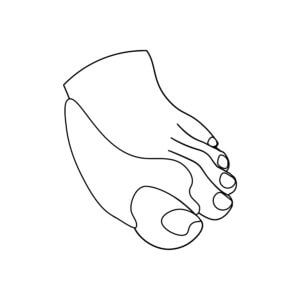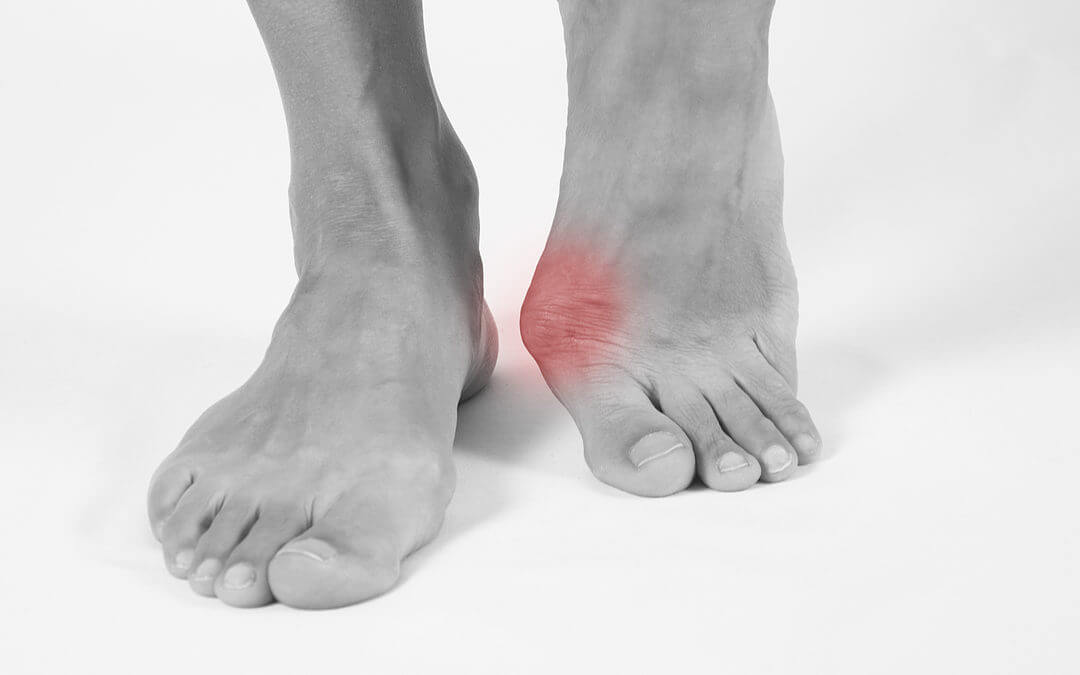Confusing terminology
Hallux valgus known as bunion deformity confuses many. The Bunion is the bump (soft and hard) on the side of the big toe joint. As the toe bends outwards toward the smaller toes we call this valgus deformity. Hallux just means toe in a language no longer used. The amount of information on this subject is daunting and sadly ‘fake’ material exists in the media arena. This adds to the confusing picture. Most of this type of news suggests that the deformity can be corrected. However, this is not possible without surgery. There are many things we can do without surgery so it is important not to despair.
 There are usually several questions people will ask first
There are usually several questions people will ask first
Do I need to do something?
If I need to have something done, can I avoid surgery?
If surgery is necessary what does it involve?
How does it affect me?
Two major concerns about hallux valgus
(1) Do you have a toe that appears deformed. Someone in the family who has a bunion deformity? Are you are worried that it might get worse. Is your foot starting to look like your grandparent’s deformed foot?
OR
(2) Are you in pain so that your big toe joint hurts. There is a pain when you walk and on top of this, you feel you cannot wear the shoes you like? Okay maybe we cannot put you into one of these groups but these are the two most common categories.
So what is a bunion?
The condition affects around 25% of the population. It is usually hereditary and therefore passed through our family genes. Women are more prone to the condition and suffer often because of the limitations of footwear style. Rarer cases can be associated with rheumatoid arthritis. The bunion is the bump also associated with extra bone (exostosis). If the skin is thin a sac of fluid called a bursa or ganglion may lie beneath the skin. This comes from damaged tissues associated with the joint lining. The condition becomes more of a concern if the skin is broken leaving a wound. If you are not good at healing an ulcer may form due to constant pressure. I patients with poorly controlled diabetes foot health advice is required from podiatrists, nurses and doctors to ensure the medical disorder is managed and hopefully prevent or even reversed. Therefore you are advised to make sure your diabetes is sorted as a priority. The illustration shows the colour changes that arise with repeated pressure. The deformity part is the joint dislocating sideways (i.e the valgus). You can get it going the other way but this is not common (i.e varus).
Advice, self-help and acting sensibly

If it is pain over the bump then use protective sleeves. Chose something that does not take up too much room in the shoe. Such protective devices are cheap and will reduce pressure over the skin. If the skin is damaged then apply first aid. You can use one of those cushioning plasters from a pharmacy, they work well. Add an antiseptic like Savlon products (cream or spray) to prevent infection. If the toe has developed a deeper wound that fails to heal, then seek medical advice. You should not attempt to treat an ulcer yourself. If you want to use a pad to protect the skin surface go to my article on self-help
Do toe splints work?
Adverts on the internet, magazine and pharmacies (Chemists) often try to persuade us to buy a bunion splint. Well here are the facts. Do try them if you want, they won’t harm you. Equally, they will not correct your hallux valgus deformity. There is some weak evidence that a if splints are used before adolescence that the deformity will be slowed down. However, splints can make the joint both more comfortable and there is scientific evidence to suggest used to support joint comfort that this works. No one however managed to correct the toe position.
Is Age a factor?
If you are under 25 and the deformity is big then you may find that you take steps early to have the foot corrected. This means surgery. More information on age.
Latest information sheet published in June 2021 on what to expect after bunion surgery – What you really need to know after bunion surgery?
Joint pain
This is the second concern a patient will want to discuss after the toe shape and the deformity. Is the pain recent (acute) or has it been present for maybe six months or more? In some patients, joint damage may be evident. It is very rare for the problem to be caused by gout but your GP may want to run a test. Stiff toe joints are more likely to be associated with joint or cartilage damage. An injection can also work and is best carried out under imaging (x-ray or ultrasound) by someone who does this regularly. When the joint is damaged the shiny surface (cartilage) lubrication and smooth movement is affected. Factsheet-109-The-painful-big-toe-joint- is helpful as it provides a number of diagrams of the problems associated with joint damage. The aim of conservative care is to prevent the joint from requiring a new joint (arthroplasty) or stiffening (arthrodesis), but sometimes this is necessary.
 If you are considering surgery let me recommend my patient journey book launched in 2019 with detailed stories from patients who I had operated on. Details are provided on self-help treatment. A full chapter on consent and complications is provided. The book is a story behind the scenes so it provides ‘wart an’ all!’ Available from Amazon books as an eBook and paperback. Read reviews in my bookstore.
If you are considering surgery let me recommend my patient journey book launched in 2019 with detailed stories from patients who I had operated on. Details are provided on self-help treatment. A full chapter on consent and complications is provided. The book is a story behind the scenes so it provides ‘wart an’ all!’ Available from Amazon books as an eBook and paperback. Read reviews in my bookstore.
Thanks for reading ‘Hallux valgus known as bunion’ written by David Tollafield

Updated 4 May 2021
First published April 2019

Busypencilcase Reflective Communications Estd 2015

Trackbacks/Pingbacks